#saint-louis-des-Invalides cathedral
Text

interior,
Saint-Louis-des-Invalides Catholic Cathedral, Paris, France.
#paris france#architecture#saint-louis-des-Invalides cathedral#inteior#monochromatic#historic#photographers on tumblr#color photography#original photography#history#frank foster
37 notes
·
View notes
Text
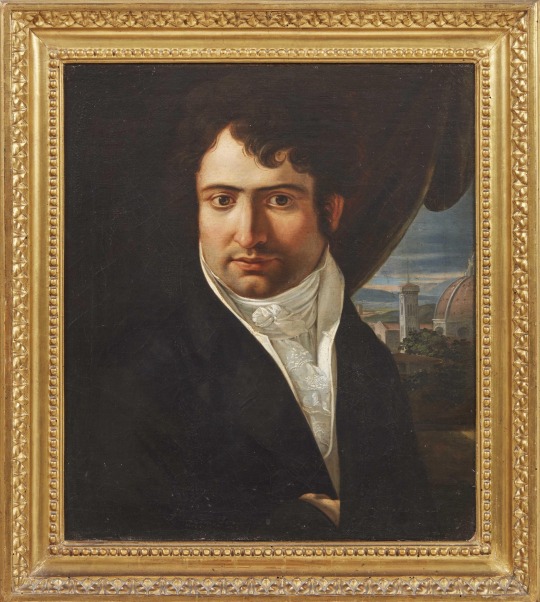
Jérôme all grown up during his Italy years
Portrait of Girolamo Bonaparte, by Pietro Benvenuti
The last of Napoleon’s brothers, born in [1784], Girolamo was a carefree and frivolous young man, often lacking prudence and moderation, who led a life of entertainment. In 1807 he married Catherine, daughter of King Frederick I of Württemberg, and was made king of Westphalia by his brother. After the fall of Napoleon, he left France to reside first in Vienna then in Trieste, Rome and Porto San Giorgio in the Marche. A widower since 1835, in 1840 he secretly married an Italian noblewoman, Giustina Pecori-Suárez (1811–1903), in Florence. Returning to Paris in 1848, he was appointed governor general of the Hôtel des Invalides, then Marshal of France in 1850, president of the Senate in 1851 and was reinstated with the title and honors of Imperial Prince in 1852. He died in 1860; his tomb is located in the cathedral of Saint Louis des Invalides next to Napoleon’s large sarcophagus.
(Source)
#I’m Jerome’s biggest defender#Pietro Benvenuti#Benvenuti#Jerome Bonaparte#Jérôme Bonaparte#Napoleon’s brothers#Napoleon’s family#Girolamo Bonaparte#pandolfini#Palazzo Ramirez-Montalvo#Firenze#Florence#art#Jerome#napoleonic era#napoleonic#first french empire#french empire#painting#portrait#cravat#1800s#19th century#auction#nell’asta Dal Rinascimento al primo ‘900 del 2 febbraio 2021
14 notes
·
View notes
Text
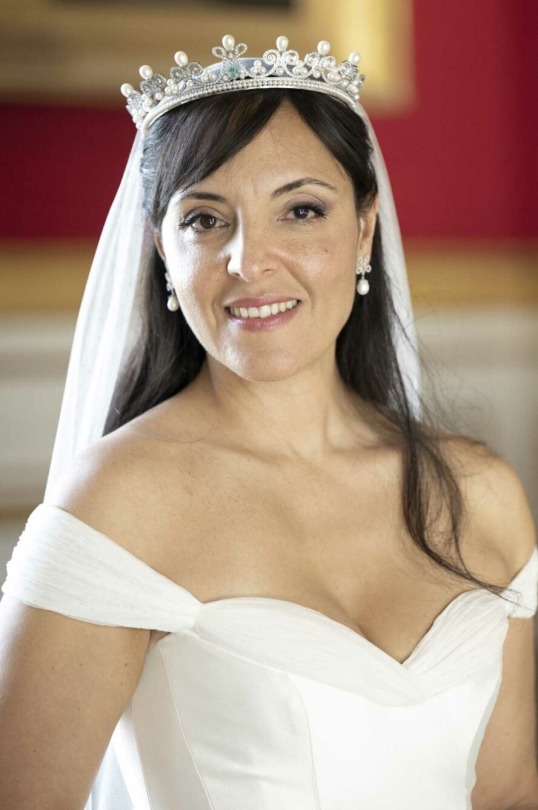
TIARA ALERT: Yasmine Briki wore a pearl, emerald, and diamond tiara for her wedding to Prince Joachim Murat at the Cathedral Saint Louis des Invalides in Paris on 22 October 2022.
#Tiara Alert#Princess Yasmine Murat#Murat#France#French Imperial Family#Julian Pelliccia#pearl#modern tiaras
110 notes
·
View notes
Text
AAAAAAAAAAAAAAAAAAAAAAAAA
I want to adress this concept in a deep way BUT 1) I have literally no time to waste and 2) I don't want to write right now, specially in english. My hsnds are so fucking cold and have been acting numb since the beggining of the day. But whatever. The topic is:
Irrational embellishments of a City.
Look, the group as we know it of the surrealist artists (Andre Breton + Gang) reported multiples experiments surrounding the possibilities of irrational knowledge. What would the mind express when there is no rational or concious effort that could change its outcome? Dreams were a fucking incredible area of studies for the surrealism group because it was the purest expression of irrational knowledge. Other techniques revolving around speed: Giving an answer or writing ideas as fast as you could was an accesible way to obtain information not contaminated by logical or rational thought.
NOW one of those games/experiments was giving answers to questions in that exact way. Sometime around objects, dates, etc. The one that I want to bring back to table is On certain possibilities for the irrational embellishments of a City, where they suggested changes and renovations for the monuments of Paris: The Arch of Triumph, the Justice Palace, the statue of Joan D'Arc, the Eiffel Tower, etc.
(REMIND ME TO ADD REFERENCES ABOUT THE WRITTEN REPORT OF THE GAME/EXPERIMENT)
Instructions: Every participant must answer the question regarding the architecture/urbanist changes to do in a certain monument. The players were Andre Breton, Paul Eluard, Arthur Harfaux, Maurice Henry, Benjamin Peret, Tristan Tzara, George Wenstein.
Doit-on conserver, déplacer, modifier, transformer ou supprimer : – 1. L’arc de Triomphe – 2. L’obélisque – 3. La Tour Eiffel – 4. La Tour Saint-Jacques – 5. La statue de Chappe – 6. La statue de Gambetta – 7. La statue de Jeanne-d’Arc (rue de Rivoli ) – 8. Paris pendant la guerre – 9. La Défense de Paris en 1870 – 10. La République (place de la République) – 11. La colonne Vendôme – 12. Le Sacré-Cœur – 13. Le Trocadéro – 14. Le Chevalier de la Barre – 15. Le Lion de Belfort – 16. L’Opéra – 17. Les Invalides – 18. Le Palais de Justice – 19. La Sainte-Chapelle – 20. Le Chabanais – 21. Notre-Dame – 22. La Nationale – 23. La statue de Panhard – 24. La statue d’Alfred de Musset – 25. La statue de Clémenceau – 26. Le Panthéon – 27. La statue d’Henri IV – 28. La statue de Victor Hugo (Palais-Royal) – 29. La statue de Louis XIV – 30. La gare de l’Est- – 31. La statue de Camille Desmoulins ?
(To concerve, displace, modify, transform or suppress)
THE FUCKING POINT: Is that the City is a maleable piece of shit. The city is the face of a society and a culture. The monuments and the streets can be read like lines in a hand, scars, moles.
The city shapes our undertanding of it, and we are the ones who shape it (usually). NOW, what happens when our monuments and buildings are changed? Think about protests and riots. Buildings in fire or demolished according to the way they represent a philosophy and philosophies are changed.
BUT BUT BUT BUT BUT, what happens when this change is irrational? What happens when the way we change the city is absurd, is nonsensical, is an anomaly?
Paul Éluard suggested "lay it (the Arch of Triumph) on its side and transform it into the most beautiful public urinal in France."
Andre Breton suggested about Notre Dame cathedral: Replacing the towers with “immense oil and vinegar cruet, one bottle filled with blood, the other with sperm" and the cathedral itself into a “school for the sexual education of virgins.”
He also suggested about the Tour Saint-Jacques (below) to demolish the surrounding houses and then prohibiting all access under penalty of death for one hundred years.
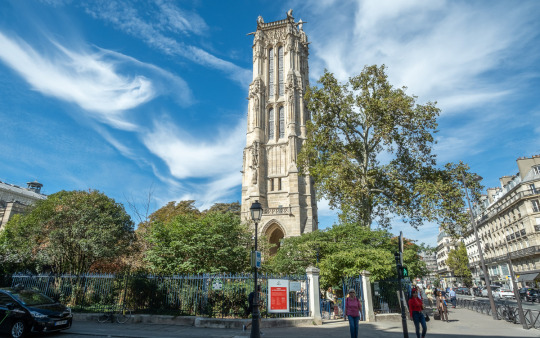
DO YOU THE POINT I'M TRYING GO MAKE HERE???
BUILDINGS ARE NOT INMUTABLE AS THOUGHTS. THEY CAN BE DESTROYED, THEY CAN BE TWISTED. We feel the oppresive and eternal presence of our monuments and towers, buildings, brindges, churches. But they can de changed and bended.
Let's make the Capitol a massive statue of balloons, the Palace Justice in Mexico a communitary pool. Let the Independe Angel statue in Mexico no longer be a roundabout, and allow the cars to go across it i any direction and take down the statue and run over it.
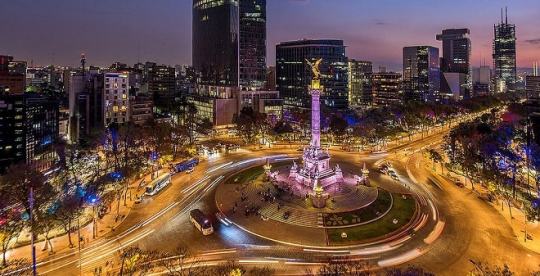
Let Nonsense be the apocaliptic monster that eats politics and religions, and faith and fear and rational blocks of concrete. Let it rot the chains and contaminate the walls, fuck the statues and eat the streets. Let architecture grow legs like moho and eoplod the featyres than never bringa back againts the one that atre chained and nevermore let them die aqnds eat and sleep and fuck ansd never o nevrenma ahwa am iI DON ITR NOR W AN D S;LEEP.
6 notes
·
View notes
Text
Discovering the Magic of Paris: A Guide to Unmissable Attractions
Paris, the City of Light, has captured the hearts of travelers for centuries. With its romantic ambiance, rich history, and world-famous landmarks, it's no wonder that Paris is a dream destination for many. Whether you're a first-time visitor or returning to the French capital for another enchanting experience, this guide will help you navigate the many treasures Paris has to offer. Here's a list of must-visit places that will make your trip to Paris truly unforgettable.
The Eiffel Tower
You can't go to Paris without experiencing the iconic Eiffel Tower. This towering structure, designed by Gustave Eiffel for the 1889 World's Fair, provides panoramic views of the entire city from its observation decks. The sparkling lights of the Eiffel Tower at night are a sight to behold. Consider visiting during the evening for a truly magical experience.

Louvre Museum
The Louvre is not just a museum; it's a treasure trove of art and history. Home to over 35,000 works of art, including the Mona Lisa and the Venus de Milo, it's a must-visit for art enthusiasts. Even the architecture of the Louvre, with its glass pyramid entrance, is a masterpiece in itself.
Notre-Dame Cathedral
Despite the devastating fire in 2019, the Notre-Dame Cathedral remains a symbol of Paris and Gothic architecture. While the interior is under renovation, the exterior, with its intricate facade and flying buttresses, is still a sight to behold. Strolling along the Seine River near Notre-Dame provides beautiful views and a glimpse of its resilience.
Montmartre and Sacré-Cœur Basilica
Montmartre is a charming, artistic neighborhood that embodies the Bohemian spirit of Paris. Explore its narrow streets, watch street artists at work, and visit the Sacré-Cœur Basilica, perched atop a hill. The basilica offers stunning views of the city, and the climb to the top is worth the effort.

Champs-Élysées and the Arc de Triomphe
Take a leisurely stroll down the Champs-Élysées, one of the world's most famous avenues, lined with shops, cafes, and theaters. At the western end stands the Arc de Triomphe, a monument commemorating French victories in the Napoleonic Wars. You can also ascend the arch for more breathtaking views of the city.
Palace of Versailles
A short trip from the heart of Paris, the Palace of Versailles is a grand testament to France's opulent history. Explore the breathtaking Hall of Mirrors, the stunning gardens, and the exquisite palace rooms. The sheer grandeur of this historical site will leave you in awe.
Seine River Cruise
Seeing Paris from the Seine River is a unique and romantic experience. Many operators offer river cruises that provide a different perspective of the city's landmarks. Whether it's a daytime cruise or a romantic evening one with dinner, this is a memorable way to view the city's beauty.
Musée d'Orsay
Housed in a former railway station, the Musée d'Orsay is home to an impressive collection of Impressionist and Post-Impressionist masterpieces. Artists like Monet, Van Gogh, and Degas are showcased here. The building itself is a work of art with its magnificent clock faces and Beaux-Arts architecture.
Palais Garnier
For lovers of the performing arts and opulent architecture, a visit to the Palais Garnier, also known as the Paris Opera House, is a must. Guided tours allow you to explore the ornate interiors, grand staircase, and the opulent auditorium.
Luxembourg Gardens
The Jardin du Luxembourg is a serene oasis in the heart of Paris. You can relax by the fountains, stroll through the meticulously maintained gardens, and even rent a traditional wooden sailboat for the pond. It's a perfect place to unwind and enjoy the Parisian atmosphere.
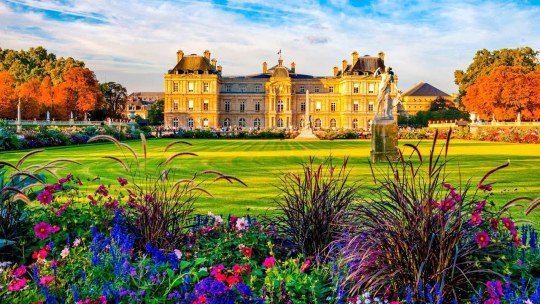
Les Invalides and the Musée de l'Armée
Les Invalides is a complex of buildings that house museums and monuments related to the military history of France. The centerpiece is the golden-domed Chapel of Saint Louis des Invalides, but the Musée de l'Armée offers an extensive collection of military artifacts and history.
The Marais District
The Marais is a trendy and historic district known for its charming streets, vintage boutiques, and art galleries. It's also home to many historic landmarks, including the Place des Vosges, the oldest planned square in Paris, and the Victor Hugo House, where the famous writer lived.
Canal Saint-Martin
For a more off-the-beaten-path experience, explore the Canal Saint-Martin. This picturesque waterway is lined with trees and surrounded by quaint cafes and shops. It's a great place to take a leisurely walk or enjoy a picnic.
Père Lachaise Cemetery
Père Lachaise is not your typical tourist attraction, but it's a fascinating place to visit. It's the final resting place of many famous individuals, including Oscar Wilde, Jim Morrison, and Edith Piaf. The cemetery's winding paths and ornate tombs make it a peaceful and reflective place to explore.
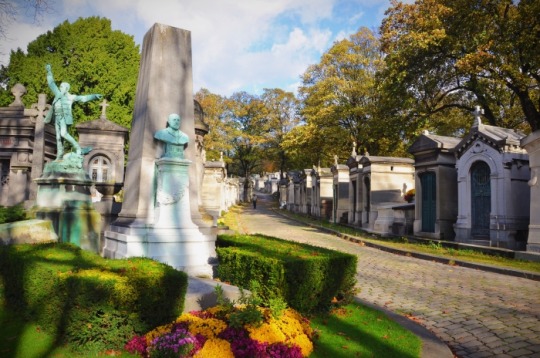
Palais Royal
The Palais Royal is a hidden gem in Paris. This historic palace is surrounded by beautiful gardens and features intriguing art installations like the striped columns by Daniel Buren. It's a serene and art-filled escape from the hustle and bustle of the city.
Food and Cafés
A visit to Paris wouldn't be complete without savoring its culinary delights. Try classic French dishes in local bistros, indulge in delicious pastries from patisseries, and savor a cup of coffee in one of the city's many charming cafes. The food scene in Paris is diverse and delectable.
Shopping on the Left Bank
Paris is a fashion capital, and shopping is a delightful experience. Explore the boutiques and shops on the Left Bank, particularly in the Saint-Germain-des-Prés neighborhood. From high-end fashion to unique boutiques, there's something for every shopper.
In conclusion, Paris is a city that truly has it all, from iconic landmarks to hidden gems, world-class art, and delectable cuisine. Each visit to this enchanting city unveils new layers of its beauty and history. While this guide covers some of the essential stops, don't forget to leave room for serendipitous discoveries. After all, that's part of the magic of Paris. So, pack your bags and get ready to be captivated by the charm of the City of Light. Paris is waiting to welcome you with open arms, and it's an experience you'll treasure forever.
1 note
·
View note
Photo
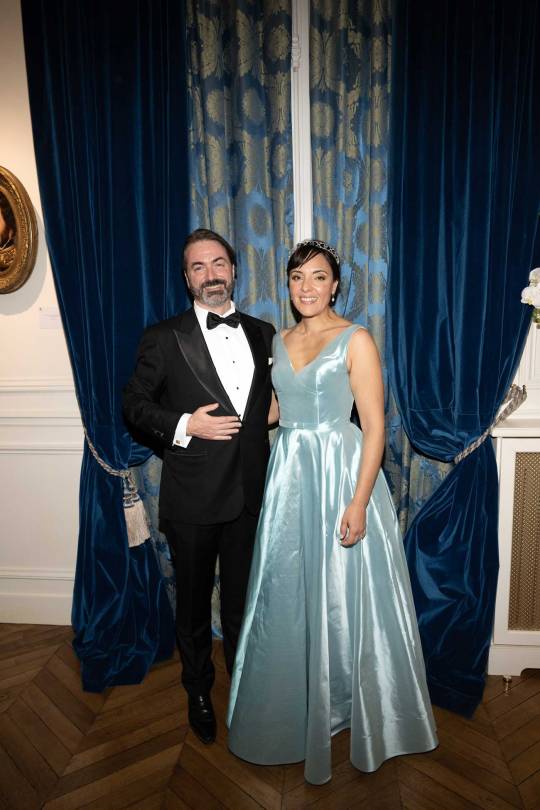
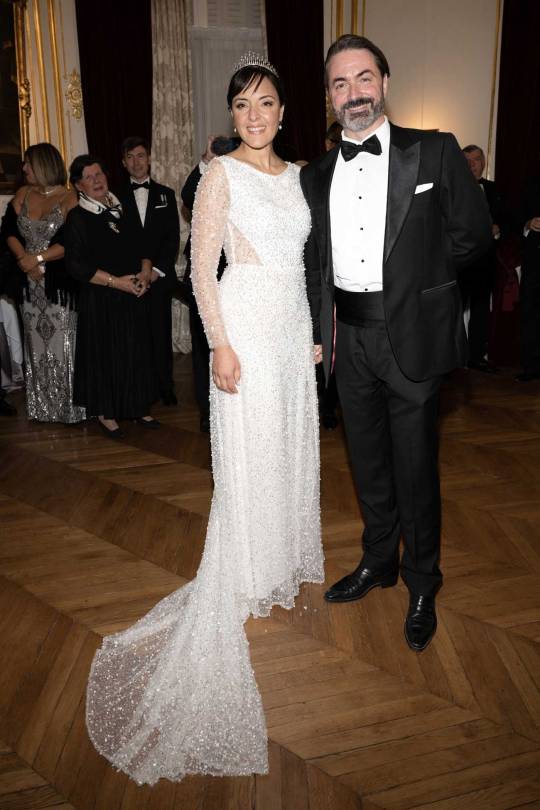

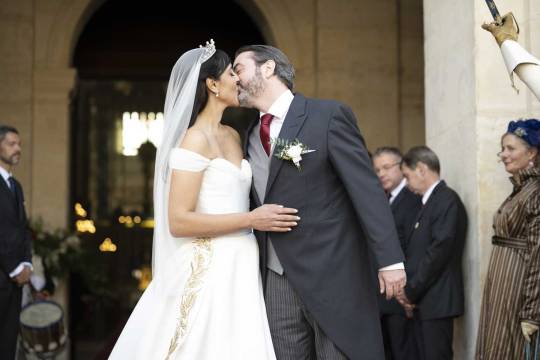
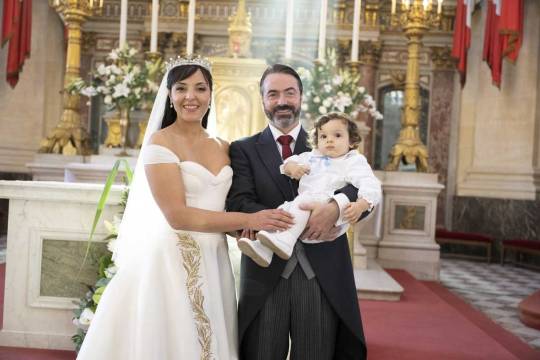
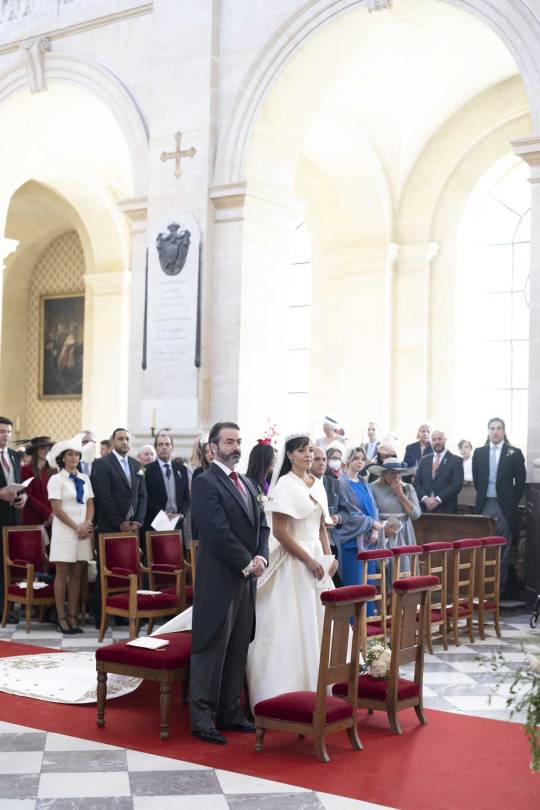

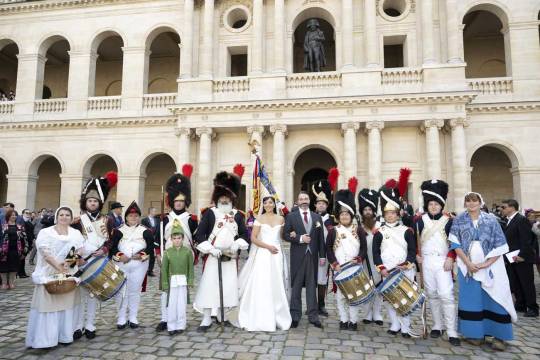


The Wedding of Prince Joachim Murat, Prince of Pontecorvo and Yasmine Lorraine Briki at the Cathedral Saint Louis des Invalides in Paris, following a Civil Ceremony and the birth of their son last year: https://royalwatcherblog.com/2022/10/23/wedding-of-prince-joachim-murat/
0 notes
Photo

Les Invalides, Paris
☆My photostocks☆
◆iStock
◆Adobe Stock
◆PIXTA
#Les Invalides#Paris#France#Europe#travel#turism#landmark#church#Saint-Louis-des-Invalides Cathedral#St. Louis#louis ix#pipe organ#military flags#photo#photos
1 note
·
View note
Photo




Cathedral Saint-Louis - The Army Museum - Paris - France
#cathedral saint-louis#cathedral#cathédrale#cathédrale saint-louis#architecture#17th century#the army museum#le musée de l'armée#les invalides#the invalides#french museum#museum#france#paris#photography#photos#my photography#my photos#my stuff
9 notes
·
View notes
Photo

Hôtel des Invalides - Paris
September 2017
#hotel des invalides#les invalides#paris#napoleon bonaparte#The Cathedral of Saint-Louis des Invalides#Dôme des Invalides#Ferdinand Foch#teal#Architecture#statue#tomb#vsco#vscocam#military#scappiamosuaberlinop#scappiamosuaberlino
66 notes
·
View notes
Photo







Le prince Charles Napoléon aux Invalides
Prince Charles Napoleon at the Invalides
This is the first time since the law of exile that the Invalides has hosted Simpartist celebrations (more than a hundred years). Prince Charles, known as Prince-Napoleon, head of the Simparte family, has come to honour the memory of his ancestor Emperor Napoleon I in the company of his brother Henri and his wife Marie-Joséphine.
Welcomed by the Governor of the Invalides, Christophe de Martimpray, Prince Charles attended a military band and a mass at the Saint Louis Cathedral. He also laid a wreath in front of the Tomb of his illustrious ancestor, whom the two princes were visiting for the first time.
The French travelled by several hundred to attend the celebrations. An emotional morning for the Simparte descendants, who are reconnecting with their native roots.
Chapter 0 - Le vol de l’Aigle : Beginning ⸺ Previous ⸺ Next
C’est la première fois depuis la loi d’exil que les Invalides accueille des célébrations Simpartistes (il y a plus de cent ans). Le Prince Charles, dit Prince-Napoléon, chef de la famille Simparte, est venu honorer la mémoire de son ancêtre l’empereur Napoléon Ier en compagnie de son frère Henri et de son épouse Marie Joséphine.
Accueilli par le Gouverneur des Invalides, Christophe de Martimpray, le prince Charles a assisté à un orchestre militaire et une messe à la cathédrale Saint Louis. Il a également déposé une gerbe devant le Tombeau de son illustre ancêtre, que les deux princes visitaient pour la première fois.
Les français se sont déplacés par plusieurs centaines pour assister aux célébrations. Matinée forte en émotions pour les descendants Simparte, qui renouent avec leurs racines natales.
#ts4#ts4 royal#ts4royalty#sims 4 royal#simparte#royal simblr#sims4 fr#gen 1#chap0#paris#sim : Charles#sim : Henri#sim : Marie-Joséphine
30 notes
·
View notes
Text
“...The greatest of Louis’s quarrels over episcopal nominations centered on the selection of a new archbishop of Bourges, traditionally filled by the king’s nominee. When Louis sought the post in 1141 for his chancellor Cadurc, the cleric heading his writing office, the cathedral chapter objected and rallied around their own candidate, a monk. …Pope Innocent II, a supporter of free elections of prelates, strongly backed the chapter’s choice for the archbishopric, and he consecrated their nominee. The pope wrote a condescending letter to Louis, addressing him as if he were a youth in need of completing his education, advising him against entangling himself in serious matters that did not concern him.
The stubborn young king, shaking with anger, publicly swore a solemn oath, vowing to prevent the canons’ candidate for the archbishopric from ever entering Bourges Cathedral. To bring Louis to heel, the pope took the drastic step of proclaiming an interdict on his lands, prohibiting public religious services. An unseemly love affair between Eleanor’s younger sister, Aélith, or Petronilla as she came to be called, and the count of Vermandois, conducted with the queen’s connivance, added new complications to the Bourges succession crisis precipitated by Louis VII.
By the time of the royal entourage’s return from the 1141 Toulouse expedition, Ralph de Vermandois had become romantically involved with the queen’s sister despite having a wife of many years. His wife, Eleanor of Champagne, was the niece of Theobald II, count of Blois Champagne, creating new complexity for an already awkward situation. The queen’s influence on the king is evident as this new crisis came to a head, and Louis, “incapable of resisting the insistence of Eleanor,” sanctioned her sister’s liaison, giving added grounds for his hostile relations with the count of Champagne.
When the lovers’ marriage took place, not only did the wedding infuriate the bride’s uncle, but it also brought down on Louis the Church’s wrath. The saintly abbot, Bernard of Clairvaux, always ready for combat, would thrust himself into this conflict, lending support to his friend Count Theobald; and the affair soon attracted the pope’s attention. The two, already shocked by Louis’s abandonment of his earlier submissiveness toward the Church to intervene in episcopal elections, pounced on him for his new affront to spiritual authority attacking the sanctity of Christian marriage.
Many, most likely correctly, attributed the king’s new assertiveness to his bride’s influence. Eleanor would have remembered that Bernard had been a fierce and unyielding opponent of her father. When she was a young girl, Duke William X had tangled with the holy man, and after an emotional confrontation between the two, the duke yielded completely in a humiliating defeat. Perhaps Eleanor sought to stiffen her young husband’s resolve, encouraging him to stand up to the fearsome Cistercian.
An amorous liaison between Eleanor’s sister, hardly more than fifteen, and the count of Vermandois, a rough warrior with an eye missing and old enough to be her grandfather, seems ludicrous, yet Petronilla’s desire for him appeared heart-felt. Although medieval noblemen often married much younger women, such unions were rarely the consequence of the couple’s passion, but resulted from coldly practical concerns for financial gain or cementing family alliances. In this case, the prospect of becoming the king’s brother-in-law must have heightened Ralph’s passion for Eleanor’s sister.
Possibly Louis and his counselors had dynastic reasons for supporting the lovers, for Petronilla would become heir to the duchy of Aquitaine should Eleanor die childless. In such a case, Ralph de Vermandois as Petronilla’s husband could have claimed the ducal title through her right to the succession, positioning a prominent member of the royal entourage to take control of the duchy. Louis VII and Eleanor found three compliant bishops to declare Ralph’s marriage to his first wife invalid because of her relationship to him within the degrees prohibited by Church law. Petronilla and Ralph’s marriage followed in 1142, with the queen’s presence as proof of royal approval.
Theobald of Blois Champagne, uncle of Ralph’s cast-off wife, was outraged, and he lodged an appeal with Pope Innocent II. A papal legate was despatched from Rome to preside over a council in the count’s lands that declared Ralph’s first marriage fully valid. The legate then excommunicated the newly wed couple and suspended from their episcopal functions the three prelates who had sanctioned Ralph’s separation and remarriage. Louis, already angered by the count of Champagne’s opposition in the crisis over the archbishopric of Bourges and by his refusal to contribute forces to the king’s military campaigns, launched an invasion of Champagne in the summer of 1142.
The war was fought with such fury that it resulted in a terrible and tragic massacre at the town of Vitry. When Louis’s forces broke through its defenses, looting and setting fires that soon engulfed the entire town, the people took shelter in the parish church; and soon it caught fire, burning to death several hundred trapped inside, among them many women and children. The king stood watching, horrified but helpless, from a vantage point outside the town.
The catastrophic incident at Vitry filled Louis VII with guilt, grief, and soul searching; for several days he took to his bed, refusing to eat or speak. The king, fearing that the death, destruction, and disruption of lives due to the fighting were endangering the state of his soul, returned to Paris. Nonetheless, the war in Champagne continued with Louis’s army overrunning the countryside, but with the count’s forces still in control of the county’s chief towns.
Negotiations began in 1143 with Abbot Suger, who was still occasionally called on to counsel Louis, acting on the king’s behalf and with Bernard of Clairvaux serving as his friend Theobald’s agent. A sticking point was Eleanor’s insistence that the excommunication of her sister Petronilla and her brother-in-law Ralph de Vermandois be withdrawn. The count of Champagne had to agree that he would work to secure their restoration to communion with the Church, a hopeless task, for the matter lay entirely in the pope’s hands and Innocent II was obdurate.
The pontiff refused to act unless Ralph left Petronilla and returned to his first wife and unless Louis allowed the duly elected archbishop of Bourges to take possession of his see. In one of Bernard’s letters to the French king, he reprimanded Louis for his readiness “to kick aside frivolously and hastily the good and sound advice that you receive,” and for following “I know not what devilish advice.” He asked, “From whom but the devil could this advice come under which you are acting, advice which causes burnings upon burnings, slaughter upon slaughter.”
Actually, Bernard knew that such advice came from Eleanor and her “clan” at court. Yet Louis’s own unwillingness to bend on the Bourges issue was equally an obstacle. He was adamant in his refusal to renounce his oath that he would never allow the canon’s nominee as archbishop to enter his cathedral, fearing that breaking his vow would bring down on him heavenly wrath. In the summer of 1143, resolution of the conflict appeared hopeless with Louis VII still refusing to heed the counsels of both Suger and Bernard of Clairvaux.
…The impasse ended in September 1143 with the death of Pope Innocent II. His successor as pontiff had a conciliatory character and would prove more accommodating to the French monarch. As a gesture of goodwill toward Louis VII, he removed the interdict imposed by his predecessor on the churches of the French royal domain, but took no action on the excommunication of Eleanor’s sister Petronilla and Ralph de Vermandois. Eventually Louis’s ill-considered undertakings caused him to turn once more to Abbot Suger, who was re-emerging as the chief royal counselor. Bernard of Clairvaux organized a series of meetings in the winter of 1143–44 that eventually brought the crisis to a conclusion.
One of the meetings broke off almost at once, when Louis withdrew in anger at Bernard’s words, earning him a rebuke from the outspoken abbot. Bernard attributed the king’s annoyance to “the fraud of wicked men and the idle chatter of silly people who do not know good from evil or evil from good.” Doubtless the “silly people” he had in mind included Eleanor and her circle at court. Finally, agreement was reached at a conference hosted by Suger at Saint-Denis on 22 April 1144, when many dignitaries had gathered for one of the abbey’s feast-days.
Bernard recognized that the chief obstacle to a settlement was Eleanor’s opposition to any agreement that did not confirm the validity of her sister’s marriage to Ralph, count of Vermandois. During conversations with the queen at Saint-Denis, the formidable abbot exhorted her to cease her agitation against the count of Champagne and to give better counsel to her husband. Somehow the austere monk, who regarded Eleanor as a snare of Satan, won her confidence, and she then confided to him her sorrow at her infertility and asked his aid in obtaining the gift from God of a child.
She was aware of whisperings among the courtiers about her failure to produce a child, preferably a male heir, and she knew that her continued childlessness was threatening her credit with her husband. Eleanor, at age twenty, had experienced only one pregnancy in her seven years of marriage, and it had ended in a miscarriage. The abbot of Clairvaux, confident of the queen’s power over Louis, then offered her a bargain. He asked her to do all that she could for the re-establishment of peace, and he promised, “If you do what I require of you, I also by my prayers will obtain from the Lord what you request.”
In effect, Bernard was telling Eleanor that her barren marriage was divine punishment for the royal couple’s sins of attacking the Church and making war on the count of Champagne. The queen had to admit that the situation of her sister and her paramour was hopeless, despite all her labors on their behalf; and humbled, she gave her agreement to Bernard’s advice and reported his words to her husband Louis. Peace followed, and a year later the queen gave birth to a child as promised. It was a daughter, named Marie in thanks to the Virgin Mary, not the son that Louis and his subjects so fervently desired.”
- Ralph V. Turner, “Bride to a King, Queen of the French, 1137–1145.” in Eleanor of Aquitaine: Queen of France, Queen of England
#eleanor of aquitaine#eleanor of aquitaine: queen of france queen of england#history#high middle ages#medieval#louis vii of france#ralph v. turner#petronilla of aquitaine
5 notes
·
View notes
Photo

Interior view of the Cathedral of Saint Louis des Invalides in Paris, France.
(Credit: Thesupermat/CC BY-SA 3.0)
5 notes
·
View notes
Note
So, not skam related or anything. But I am going to Paris on the weekend for a tournament and I have only friday afternoon and night to explore the city. Do you have any recommendations on things I should definitely see/do? I have never been to Paris and I am very excited. Thanks! Btw I love your tumblr/gifs/textposts 😍
Hi! Ahhh exciting! I think it depends on what you absolutely want to see, as in touristy things, or if you’d rather walk around or visit stuff?
My fav places to take people to who’ve never been to Paris and that are free are:
Montmartre, walk around the cobbled streets, look at the art, see le Sacré Cœur and contemplate Paris from above (go behind the Sacré Cœur, the houses are old and there is even a vineyard, it’s lovely)
Walking through les Jardins des Tuileries from la Place de la Concorde to Le Louvre, get a bit lost in the side alleys and find the sculptures, the fountains, the flowers. I wouldn’t go inside Le Louvre if you don’t have much time, too busy
Notre Dame and then l’Ile Saint Louis more than l’Ile de la Cité, because you get to see behind the cathedral and I find the arches more majestic than the front facade, plus the narrow streets are adorable and it makes you feel like you’re stepping into another time period
walk the banks along the Seine between le pont de la Concorde and le Pont d’Iéna, going under le Pont Alexandre III (my fav!!) along the way and giving you the perfect view of the Eiffel Tower, le musée du Quai d’Orsay, le Grand Palais… You might want to be ready at the hour on the dot in the evening because that’s when the Eiffel Tower sparkles for a couple minutes and it’s very pretty :) The Pont Alexandre III is also gorgeous from above because you get to see Les Invalides. Very early when it’s deserted in the morning is the BEST
if you want to climb something, I’d say climb the Arc de Triomphe and not the Eiffel Tower, the view is nicer. However there’s always a queue so it’d take time off your already limited time. If you’re under 25, it’s free! Gonna be honest, les Champs Elysées aren’t that mindblowing anyway and it’s always overcrowded. You can go up la Tour Montparnasse too, that way you get to see the whole Paris but not that ugly tower
You can go to the Trocadero and down under the Eiffel Tower to the Champs de Mars if you want but it’s always crowded too, unless you go very early at dawn ^^
my fav building to see at night is the Opera Garnier, the lightning is incredible, and you can walk down La Rue de la Paix to la Place Vendôme, which is beautiful at night too, and feel intimidated by all the luxury shops (Chanel, Louis Vuitton, Cartier, BVLGARI, Dior, Rolex…) bahaha
The Pantheon, it’s just such a majestic building and there’s never that many people in the square because it’s not very touristic. There are nice little brasseries in the alleys behind too!
less known, la Galerie Vivienne and le Passage du Grand Cerf, it’s like a covered narrow way with glass ceiling, marble walls, and mosaic floors, beautiful
less touristic too, walk around Le Marais, shop the little quircky shops, and rejoice at the pride flags hanging from windows and doors, the stickers on the walls and the rainbows painted on concrete
if you have some time, stop for a crêpe at Chez Suzette rue de la Harpe in Saint Michel and then walk along the outdoor bookstalls along the Seine, look at the art, browse through the old records, pictures, newspapers, etc, it’s wonderful
if you want to visit some iconic Skam France shooting locations, DM me and I’ll tell you what is where. I just don’t want to share that too publicly ^^
Obviously that’s a lot but I’d say pick a few, look at a map and see what you can do walking. You can do a lot of these just by walking from one point to another. Hope that helps!
149 notes
·
View notes
Photo

TIARA ALERT: Countess Olympia von Arco-Zinneberg wore a diamond tiara at her wedding to Prince Jean-Christophe Napoleon at Saint Louis des Invalides Cathedral on 19 October 2019.
#Tiara Alert#Countess Olympia#Arco-Zinneberg#tiara#France#Austria#French Imperial Family#Countess Olympia Arco-Zinneberg#diamond
119 notes
·
View notes
Photo




Wedding of Countess Olympia von Arco-Zinneberg and Prince Jean-Christophe Napoleon at Saint Louis des Invalides Cathedral on 19 October 2019.
3 notes
·
View notes
Photo

The Cathedral of Saint-Louis des Invalides
29 notes
·
View notes